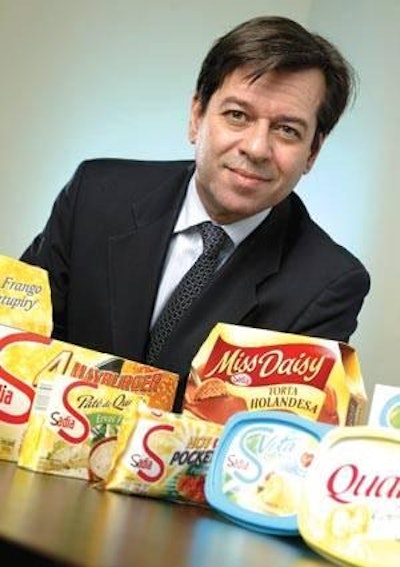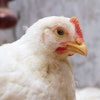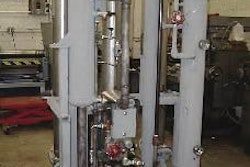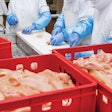
The internationalization of the meat market is under way, and Brazilian companies are in the lead. If it was low-priced products that attracted foreign buyers in the past, Brazilian meat and poultry companies are working to change that by diversifying into further-processed products for export.
In the beef sector, for instance, the Brazilian company JBS-Friboi announced the acquisition of the U.S.-based Swift Foods last May, becoming the sector's largest processing company in the world. In the same month, Brazil's Perdigão announced an agreement to acquire the Dutch company Plusfood Groep BV, recognized in Europe as a processed products brand. But there's no better example of the trend than Brazil's leading poultry company, Sadia.
Internationalization of its branding is, in fact, one of Sadia's most noted competitive advantages. Sadia equals prestige for consumers in the Middle East. And in Moscow, the Sadia brand was considered "top of mind" in further-processed chicken products in surveys in 2006.
Sadia claims almost 80 percent of poultry sales in the Brazilian market, with a total flock of 23 million birds, but is paying attention to markets abroad. During the first quarter of 2007, a portion of the company's R$177 million (US$97.963 million) in investment was for the construction of its first meat processing plant outside Brazil a joint venture with the Russian group Miratorg. "The goal is to develop further-processed products using Russian seasonings and recipes," said José Augusto Lima de Sá, Sadia's director of international relations.
Sadia has another joint venture Sadia Chile, which markets margarine and further-processed meat products. Also in the Americas, Augusto mentions the company's presence in Venezuela and Canada, the latter allowing an import quota of 8 percent of their market to Brazilian meats. While the company's main export focus was once in the Middle East, nowadays sales to that region are balanced with shipments to Europe, Asia and the Americas.
Augusto explains what the company has achieved: "It is true that Brazil became the leader in the animal protein sector because it has been unbeatable with respect to quality and costs, mainly up to 2004. Today, with the appreciation of the Brazilian currency (the real/R$), we no longer have the same competitive advantage in price. Therefore, our main differential is in the brand." Saying the Sadia brand is managed with extreme care to protect its quality image with both Brazilian and foreign consumers, Augusto adds, "Sadia does not rely on price to generate sales. It relies on added value, services and quality of products offered to the customer, both domestically and overseas."
Investments In Further Processing
Sadia's further-processed products range from mortadella and sausages to finer presentations such as cooked, roasted, grilled and breaded products. The main raw materials for value-addition are poultry meat and beef. (Sales of processed pork is beginning to grow.) Processed chicken is the main line, but turkey is gaining sales.
"The foreign consumer is very much interested in turkey products, even more than the Brazilian consumer," says Augusto. Domestically, turkey meat sales are restricted to further-processed products throughout much of the year. Whole turkeys are sold for Christmas and New Year's Eve. "The turkey eating habit is much stronger overseas. All over Europe, turkey consumption substantially increases on a day-to-day basis, in both raw and cooked product forms," he said.
In 2006, with total sales revenue of R$7.8 billion (US$4.317 billion), invested R$1.1 billion (US$609 million); 35 percent of the resources were destined to the poultry segment, 29 percent to further-processing and 14 percent to swine. In 2007, the company has plans of investing R$800 million (US$442.771 million) more to continue the construction of the Lucas do Rio Verde unit in Mato Grosso State, Brazil.
Sales, Profits Up Domestically And Internationally
Sadia, and all the Brazilian companies participating in the meat sector, recorded a dip in performance in 2006 due to the impact of avian flu in the international market. To make things worse, Russia halted Brazilian pork imports, and a dollar devaluation against the real (10.1 percent in 2006) occurred. To adjust to those adverse conditions, Sadia worked to increase sales in the domestic market. By the fourth quarter in 2006, the outlook started to improve.
The first quarter of 2007 was marked by a steady growth in the domestic market. Sales volume reached 224,800 metric tons (MT), an increase of 6.7 percent above the total of the same period in 2006. In this period, Sadia had an income of R$1.2 billion (US$664 million) in the domestic market. The line of further-processed products leads domestic sales, with a total volume of 186,300 MT. By the same token, poultry sales increased 23.3 percent in volume due to the return of the export activity to Europe and the Middle East.
In the international market, sales reached a total volume of 266,200 MT during the first quarter, an increase of 22.5 percent as compared to the same period last year. Income increased by 37.2 percent, reaching R$999.6 million (US$553.243 million). In the segment of whole birds and chicken parts, a total of 207,900 MT were shipped, a 17.4 percent increase in volume over the same quarter last year. Further-processed product shipments recorded a 16.5 percent increase in volume and an income of R$105.2 million (US$58.224 million). Pork shipments totaled R$97.2 million (US$53.997 million). At the same time, beef export volume grew 87.3 percent to 13,500 MT.
Based on performance during the first quarter of 2007, Sadia expects to see 9 percent to 11 percent growth in total sales this year. For the domestic market, estimates are for an 8 percent to 10 percent growth in sales volume. In 2006, consolidated sales volume reached a total of 1.9 million tons, from which 918,000 tons were in poultry meat. In the foreign market, a 10 percent to 12 percent increase in shipped volume is expected, due to the recovery of global poultry demand.
Success Intertwined, Domestically And Internationally
Sadia has optimism about operations in the Central West of Brazil. "The area produces the cheapest known corn and soybeans. Sadia will manage to produce the world's cheapest chicken in the Central-West area. And next year, Brazilians will be eating that meat, produced in Lucas do Rio Verde," said Augusto. At Lucas do Rio Verde, the processing plant will have a capacity of around 400,000 chickens and 4,000 pigs a day. About 60 percent of the production there is destined for export.
The investments are made possible, in part, by a domestic business buoyed by an increase in Brazilian per capita income, especially in the Northeast, which has strengthened food consumption. Sadia expects to benefit also from an economy further strengthened by improved ratings from international certifying agencies, something that should bring more foreign investment.
Things are looking up in the international arena, as well. Augusto says that Brazil expects to have future access to markets such as China, India, Mexico and the USA. If that is to come true, he notes, there are still diplomatic disputes to be solved at the World Trade Organization, such as the progress in the Doha Round.
Sadia executives foresee business opportunities around the world. "Latin America cannot continue to compartmentalize itself. The region will achieve progress by producing foods for a growing world population. This is the role of the American continent, and I believe that we must consciously carry out this project," he concludes.
 0711USAsadia_brazil
0711USAsadia_brazil


.jpg?auto=format%2Ccompress&fit=crop&h=167&q=70&w=250)














